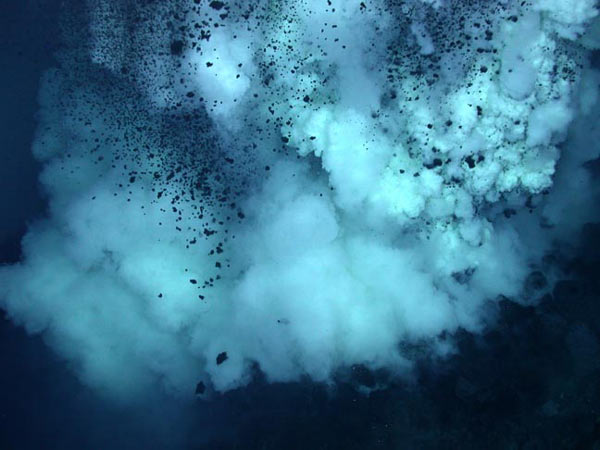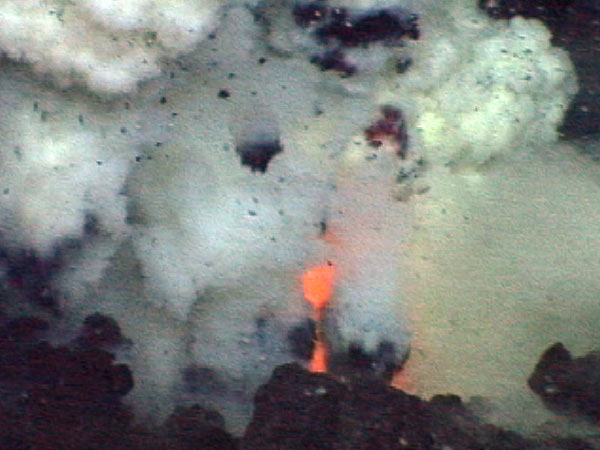Another type of cone formed within the Galápagos archipelago is called a welded tuff cone. Tuff is the name designated for volcanic rock that is formed by the consolidation of very small pyroclasts. Welded tuff is only formed when a particular eruption occurs at extremely high heat. The pyroclasts actually fuse together, to form large sloping peaks. One particularly good example of a welded tuff cone comes from around the island of San Cristóbal, called Leon Dormido (also known as Kicker Rock). The shoe like appearance as seen in this photograph taken from our ship at dusk, helps to explain why the formation is called "Kicker Rock". It is debated that this particular formation may have also formed underwater, in which case it would be categorized as palagonite.
Another type of cone formed within the Galápagos archipelago is called a welded tuff cone. Tuff is the name designated for volcanic rock that is formed by the consolidation of very small pyroclasts. Welded tuff is only formed when a particular eruption occurs at extremely high heat. The pyroclasts actually fuse together, to form large sloping peaks.
One particularly good example of a welded tuff cone comes from around the island of San Cristóbal, called Leon Dormido (also known as Kicker Rock). The shoe like appearance as seen in this photograph taken from our ship at dusk, helps to explain why the formation is called "Kicker Rock".
It is debated that this particular formation may have also formed underwater, in which case it would be categorized as palagonite.
http://www.geol.umd.ed[img]u/~jmerck/galsite/research/projects/kase/volcano.html
[/quote]
[img]http://www.hawaii.edu/environment/ainakumuwai/assets/src_images/stage3.1.jpg
One explanation of how columnar basalt is exposed beneath other strata.
I'll reply to your points more formally this weekend. I just thought you'd find
these interesting.

















